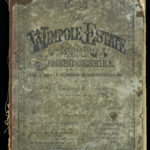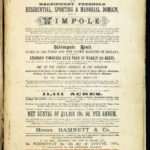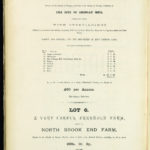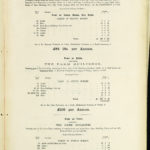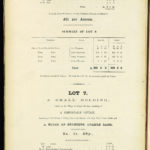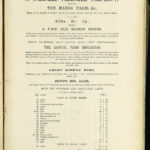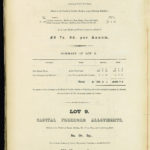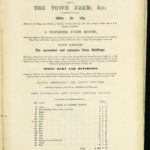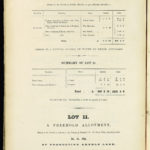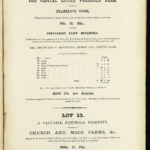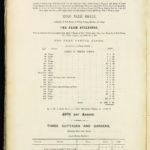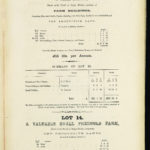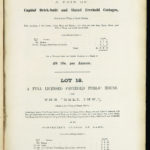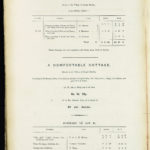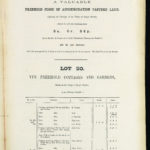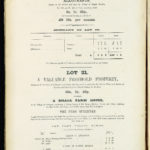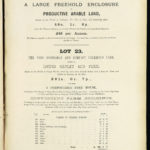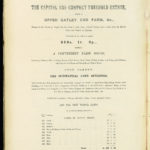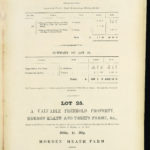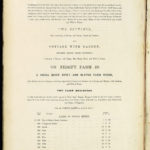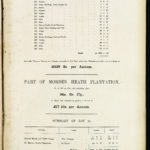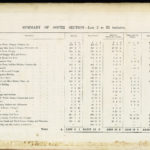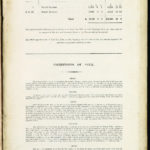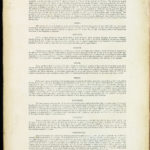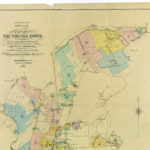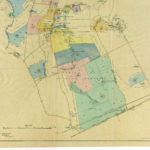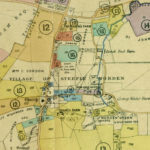Wimpole Estate Sales 5 August 1891 & 15 June 1892
This page has potential to confuse! It is the tale of two sales. One that failed completely and a second that was moderately successful.
The Yorke family, Earls of Hardwicke, owned by far the largest estate in south-west Cambridgeshire, usually known as the Wimpole Estate after the family seat. The 5th Earl of Hardwicke, Charles Yorke (1836-1897) was nicknamed Champagne Charlie because of his love of the high life. It can be truly said that he lived to excess, as he was unable to fund his lifestyle. Then in 1870 the great agricultural depression began, which was a hammer blow for an estate based almost entirely on the agricultural economy. Despite various re-organisations of the Yorke family finances and estates and ever increasing support from their bankers, the Robartes, it was clear eventually that dramatic action was required. The Yorke family were bust.
In 1891 the Trustees of the Earl of Hardwicke’s Estate Act put the whole estate up for sale, some 11,111 acres. Lot 1 was Wimpole Hall and 7304 acres of contiguous land. Then the holdings in more distant villages, including Steeple Morden, were split into a further 24 lots. These holdings were known collectively as the Detached Portion.
The sale was to be conducted at auction and it was stated that the entire estate would be offered initially as one lot and if it did not sell, then Lot 1 the Hall and the 7304 acres of contiguous land would be offered next and if that lot did not sell then, that was it, all the other lots would be withdrawn and the auction terminated. That is exactly what happened, so nothing was sold. The Sale Particulars, with pages and maps below, are for the aborted sale on 5 August 1891.
The following year the Trustees removed the Hall and contiguous 7304 acres from the offering and put only the holdings in the more distant villages (the Detached Portion) up for auction on 15 June 1892 at the Red Lion in Cambridge. This time some sales were achieved. Below is the summary of the lots in Steeple Morden Parish and the results.. The lots themselves were identical to those described in the 1891 Particulars, except the lot numbers were all reduced by one, as the Hall and its contiguous land were not offered as Lot 1 this time round.
For example, Church & Moco Farms were Lot 13 in the 1891 Particulars and sold in 1892 as Lot 12 with a description identical to that given in the previous year.
Results of Sale
| Lot | Description | Occupier | Extent | Purchaser | Price |
| 5 | North Brook End Farm | Various | 268a 0r 3p | Bought in | £5,500 |
| 6 | Occupation Close | George Gray | 2a 1r 28p | E Prime of Comberton | £125 |
| 8 | Allotments | Various | 8a 0r 5p | G J Chapman of Guilden Morden | £250 |
| 11 | Franklin’s Farm | John Franklin | 56a 3r 32p | E O Fordham of Odsey | £2,010 |
| 12 | Church & Moco Farms, Closes etc | F J Hunt | 252a 1r 15p | John Jarman, of Kneesworth | £6,000 |
| 13 | Small Holding | F J Hunt | 21a 3r 7p | Bought in | ——- |
| 14 | Small Holding | George Duke | 5a 1r 20p | George Duke, tenant | £370 |
| 15 | Small Holding | George Rule | 12a 1r 8p | E O Fordham of Odsey | £410 |
| 16 | Cottages etc | Various | 0a 3r 0d | J Jarman of Kneesworth | £160 |
| 17 | Bell PH, Cottages and Land | Various | 5a 2r 10p | P & A Meyer of Orwell | £1120 |
| 18 | Pasture | Rev Green | 2a 0r 24p | New College, Oxford | £200 |
| 19 | Cottages, Gardens and Allotments | Various | 5a 2r 9p | Bought in | ——- |
| 22 | Lower Gatley End Farm | William Westrope | 261a 0r 7p | J Jarman of Kneesworth | £7,100 |
| 23 | Upper Gatley End Farm, Cottages & Gardens | S Armstrong etc | 258a 1r 6p | J O Vinter, coal merchant of Cambridge | £5,700 |
| 24 | Morden Heath and Thrift Farms, Plantation etc | William Towler etc | 909a 1r 30p | Bought in | £9,500 |
Click on any image below to view. Click again to enlarge. Drag to view complete image.
Wimpole Estate Sale 1891-1892
Last Updated on October 15, 2024

